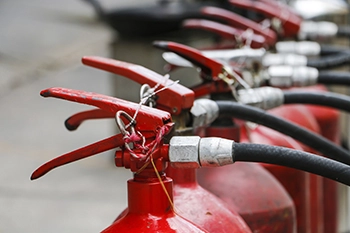If you manage or let a house in multiple occupation (HMO), you have specific legal responsibilities when it comes to fire safety. HMOs carry a higher risk of fire-related incidents due to the number of tenants, the way rooms are used, and the increased demand on electrical systems and shared areas. Understanding the importance of a fire risk assessment for HMO properties is key to meeting your legal obligations and protecting your tenants.
A fire risk assessment for HMO properties is a legal requirement in the UK. It involves a structured inspection of your property to identify potential fire hazards, assess the level of risk, and recommend measures to reduce or eliminate those risks. The assessment considers the layout, usage, occupancy, and any vulnerabilities of the people living there.
The aim is to ensure that there are clear, safe escape routes, adequate fire detection systems, and properly maintained communal spaces. Unlike a standard residential property, an HMO is subject to closer scrutiny by local authorities and licensing schemes.
HMO landlords are considered “responsible persons” under the Regulatory Reform (Fire Safety) Order 2005. This means you are legally accountable for the fire safety of the building. Because HMOs often house unrelated individuals, shared kitchens, and multiple lockable rooms, they pose a unique set of risks.
A comprehensive fire risk assessment for an HMO will look at:
Ignoring these issues can result in enforcement notices, loss of your HMO licence, or prosecution. For more detailed legal background, visit our Fire Risk Assessment page.
If you own or manage an HMO, you must:
These responsibilities are outlined in the Fire Safety Order 2005 and the Housing Act 2004. Local authorities often conduct inspections, so staying compliant is essential.
You should review your fire risk assessment at least once a year. However, certain changes can trigger a review sooner. These include layout alterations, changes in occupancy, or refurbishment work. A review should also be conducted after any incident involving fire or a near miss.
Regular reviews help you stay legally compliant and can prevent minor issues from becoming serious risks. We cover this in more depth on our Services page.
When you book a fire risk assessment for an HMO, one of our qualified assessors will visit the property. The inspection covers common areas, escape routes, fire doors, alarms, lighting, and electrical outlets. We also assess tenant awareness and safety signage.
After the visit, you’ll receive a detailed report. This includes clear recommendations specific to your property. The aim is to provide guidance you can act on without delay.
If you haven’t yet arranged your assessment, don’t wait. You can request a quote or explore our full Fire Risk Assessment service.
It is not enough to simply complete a fire risk assessment and file it away. Landlords must follow up on any actions identified in the report. Keeping records of completed work, updates to alarm systems, and staff or tenant fire safety training can also support your compliance.
In addition, landlords should consider working with a competent assessor who understands HMO-specific risks. This ensures your property remains safe, and your responsibilities are fully met.
For guidance on choosing an assessor, our About page explains how our experience helps landlords across the UK.
Additionally, many landlords mistakenly believe that once the assessment is complete, no further action is needed. However, ignoring follow-up tasks or neglecting regular reviews is a common cause of enforcement. Others fail to provide tenants with fire safety information, which could lead to confusion during an emergency.
Regular communication with tenants, visible safety signage, and proactive maintenance of alarms and extinguishers all contribute to a safer environment. By avoiding these mistakes, landlords reduce risk and improve the quality of housing they provide.
Many local authorities require an up-to-date fire risk assessment as part of the HMO licensing process. In fact, failing to provide this documentation can delay approval or lead to a rejected application. During licence inspections, councils often ask for written evidence that a professional assessment has been carried out and that all required safety measures are in place.
Furthermore, if you’re found to be in breach of fire safety obligations, it may count against your ability to renew your licence or register additional properties in the future. A properly conducted assessment not only ensures legal compliance but also helps secure and maintain your licence with fewer complications.
If you’re unsure whether your current documentation is sufficient, contact our team, and we’ll help you review your compliance before you apply.
A fire risk assessment for HMO landlords is not just a tick-box exercise. It plays a vital role in protecting tenants, maintaining your property licence, and fulfilling your legal duties. By investing in a clear, professional assessment, you reduce the risk of serious incidents and show your commitment to safety and compliance.
If you manage HMO properties and need expert support, our experienced team is ready to help. Get in touch today to ensure your property is protected.

The Complete Fire Extinguisher Maintenance Guide for Landlords, HMO Owners, and Businesses Fire extinguishers save lives - but only if they are properly maintained. Whether...

Understanding Fire Safety at Home Fire safety isn’t just a concern for landlords and business owners. Every home, whether rented or privately owned, needs the...